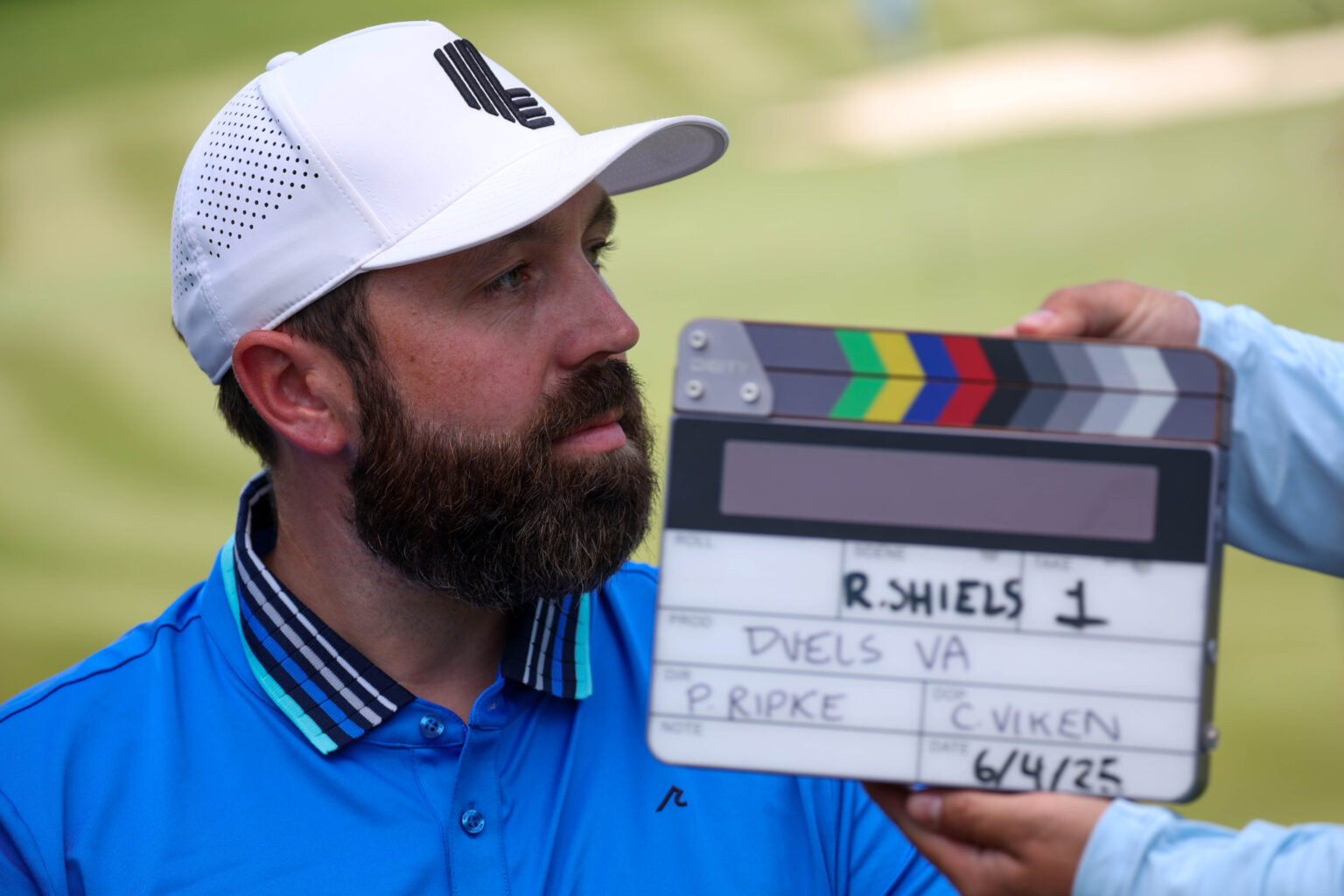The Evolution of Golf Content: From Local Courses to Global Digital Arenas
From Obscurity to Influence: Rick Shiels’ Journey in Golf Media
Long before the rise of social media stardom, Rick Shiels was an unassuming golf instructor based in Manchester, England, striving to attract clients through traditional means. With a clean-cut appearance and a passion for the game, he turned to YouTube as a platform to share swing advice, hoping to reach a broader audience.
Initially, Shiels hesitated to embrace the label of “YouTuber,” feeling a sense of embarrassment due to the stigma associated with online content creators at the time. “If someone asked me what I did, I’d say, ‘I’m a golf coach,'” he recalls. “Admitting I was a YouTuber felt awkward because it wasn’t seen as a reputable profession back then.”
Fast forward over a decade, and Shiels has transformed into a digital golf icon. With nearly 3 million subscribers, a dedicated team of 15 staff members, and lucrative sponsorship deals-including a multi-year partnership with LIV Golf-he has become a key figure in a burgeoning industry that’s reshaping how fans experience golf. His influence now rivals that of many top-ranked professional players.
The Digital Shift: How YouTube is Reshaping Golf Viewership
This weekend, millions of golf enthusiasts will tune into televised tournaments like the Canadian Open or LIV’s Virginia event, eager to see stars such as Rory McIlroy or Bryson DeChambeau. Yet, a significant portion of the audience is also turning to YouTube, where online personalities produce engaging, often humorous golf content. Videos with titles like “Our First 18-Hole Drinking Challenge!” or “Can I Beat Scottie Scheffler Starting 5 Under Par?” attract viewers seeking entertainment beyond traditional broadcasts.
The rise of YouTube golf has not gone unnoticed by industry insiders, including tournament organizers, equipment manufacturers, and broadcasters. Rather than viewing this trend as competition, they see it as an opportunity to expand the sport’s reach.
Engaging a Younger Audience: The Strategic Response from Golf Authorities
Golf’s demographic has historically skewed older, with television ratings reflecting this trend. According to CBS Sports President and CEO David Berson, “Golf viewership tends to be older, but social media and YouTube offer a pathway to engage younger fans. If we can excite the next generation through these platforms, everyone benefits.”
In response, both the PGA Tour and LIV Golf have actively embraced digital content creators. The PGA Tour has established an advisory council comprising popular YouTubers, while LIV Golf has organized events featuring prominent online golf personalities. These efforts aim to attract new fans and foster a more inclusive, dynamic golf community.
Content Creators: The New Faces of Golf Entertainment
The success of YouTube golf channels stems from their authentic, relatable personalities. Unlike the polished, often distant tone of traditional broadcasts, these creators showcase everyday golfers attempting to break 90, take on humorous challenges, or explore unconventional courses. Their approachable style resonates with viewers, especially younger audiences.
Channels like Good Good Golf, with over 1.8 million subscribers and a recent $45 million investment, exemplify this trend. Similarly, GM Golf boasts nearly a million followers across YouTube and Instagram, while creators like Grant Horvat and Bob Does Sports have built brands and merchandise lines around their content.
Nick Stubbe, known as Fat Perez, epitomizes the relatable golfer-long-haired, jovial, and unpretentious. A former accountant from Richmond, Virginia, Stubbe transitioned from avid viewer to content creator, quitting his job after his channel became financially sustainable. His approach emphasizes the fun and community aspects of golf, contrasting sharply with the elite professionalism of tour players.
Professional Players Embracing the Digital Realm
Some of the sport’s top professionals have fully embraced YouTube as a platform for personal branding and fan engagement. Bryson DeChambeau, for instance, has over 2 million subscribers and frequently produces entertaining videos, from playing with vintage clubs to attempting wild stunts. His most popular clip, “Can I Break 50 With President Trump?” has amassed over 15 million views, illustrating the platform’s reach.
DeChambeau describes his YouTube journey as rekindling his childhood enthusiasm for the game. “It’s made me feel like a kid again,” he says. “Trying fun challenges and doing crazy things keeps the game exciting and fresh.”
Bridging the Gap: From Amateur Content to Professional Tours
Aspiring golfers like Luke Kwon have leveraged YouTube to supplement their careers. Kwon, who competed on the PGA Tour’s Chinese and Latin American circuits, turned to online content to attract sponsorships and showcase his skills. His engaging travel videos and course reviews have garnered a global following, culminating in his victory at the PGA Tour’s Creator Classic in Atlanta, watched by over 110,000 viewers online.
This crossover has prompted the PGA Tour and LIV Golf to formalize their relationships with digital creators. The PGA Tour’s Creator Council, formed in 2022, includes influential YouTubers who help shape fan engagement strategies. LIV Golf’s Duels series pairs pros with YouTubers, further integrating digital personalities into the professional landscape.
The Future of Golf: A Digital-Driven Evolution
As the median age of YouTube golf viewers is around 33-significantly younger than traditional fans-the sport’s governing bodies recognize the importance of digital engagement. The PGA Tour’s official YouTube channel now boasts over 1.6 million subscribers, and LIV Golf’s online events continue to draw millions of views.
Rick Shiels remains at the forefront of this movement, traveling with LIV Golf to produce innovative content that appeals to a global audience. His constant quest for fresh ideas-often scribbled in a notebook-reflects the dynamic nature of digital golf entertainment.
Conclusion: A New Era for Golf Engagement
The rise of YouTube golf channels has transformed the sport’s landscape, blending traditional competition with vibrant, community-driven content. This digital revolution not only attracts younger fans but also offers a new avenue for professional players and organizations to connect with audiences worldwide. As the industry continues to evolve, one thing is clear: golf’s future is increasingly intertwined with the dynamic world of online media, promising a more inclusive, entertaining, and accessible game for all.

